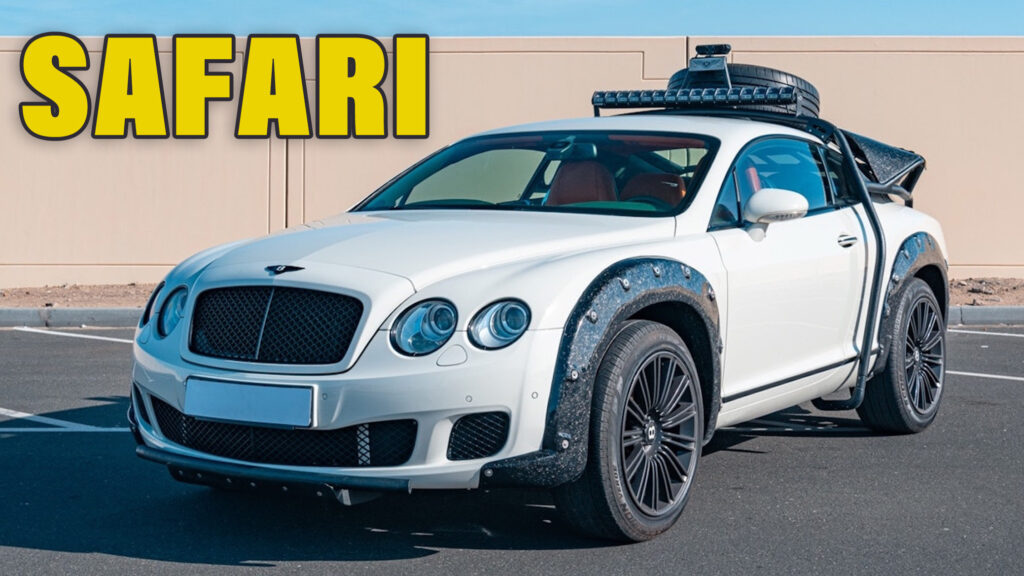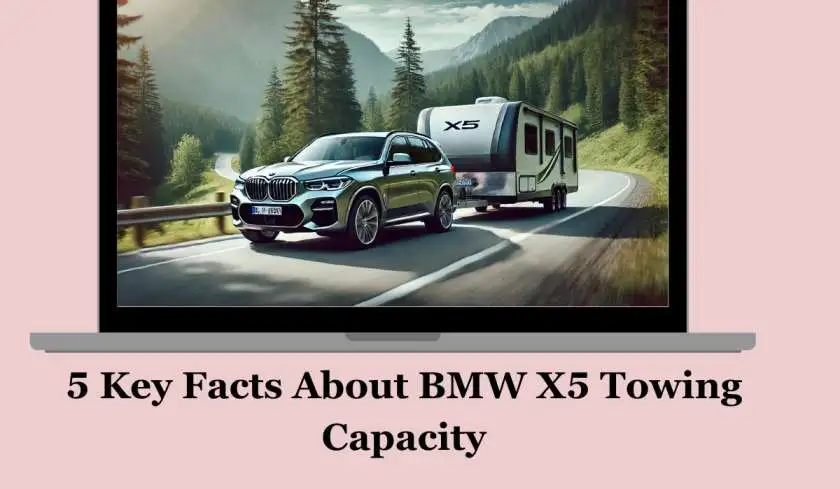The Ultimate Guide to BMW M2 vs M3 2024
When the first BMW M3 was released in 1987, it revolutionized how the world thought well-nigh sports cars. Not only was the E30 M3 the uncontrived product of the upper-echelon DTM racing series, but it was moreover a usable car.
Since 1987, there have been six generations of M3, each holding true to that original blueprint. Granted, some generations fit the snout a bit largest than others, but each generation was unmistakably ripened with the same principles in mind.
In 2016, BMW introduced the BMW M2. In a world where cars seem to be ballooning like led zeppelins, the M2 took a variegated approach. BMW trimmed the fat and kept the wheelbase short, two key traits of scrutinizingly every truly successful track-going machine. The M2 fills the spot that the M3 left overdue with the E46 generation. While the M3 has grown up to occupy the sport sedan role, the M2’s coupe chassis is ripe for throwing virtually corners.
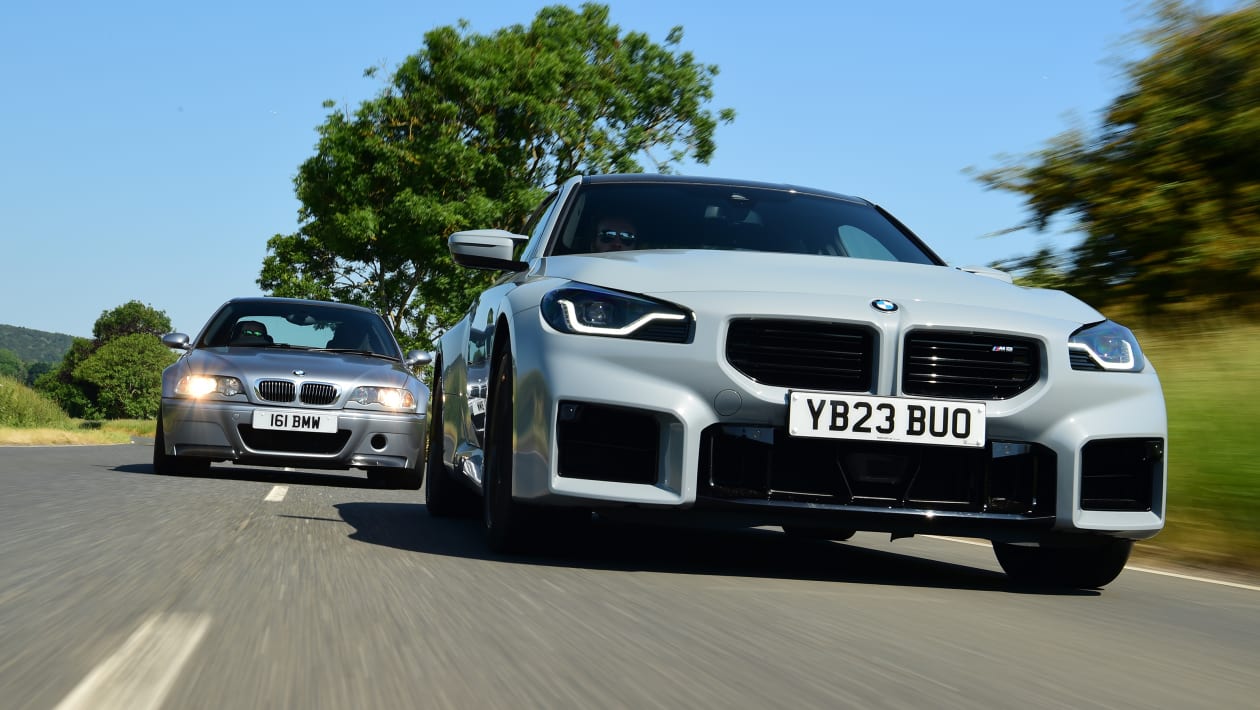
With both the M2 vs M3 competing for the hearts of BMW fans everywhere, it truly is like choosing between two children. In this guide, we take a closer squint at both the BMW M2 and BMW M3 and help to determine which vehicle is right for you.
If you are looking for increasingly BMW head-to-head content where we discuss generational differences between other popular BMW models, trammels out our BMW F30 vs G20 3-Series Guide and our BMW M3 vs M4 Guide.
BMW M2 vs M3 Background Information
It’s no secret that the BMW M3 has a far increasingly distinguished and decorated history than the M2. A lot of that boils lanugo to the fact that the BMW M3 has been virtually 30 years longer than the M2.
With that uneaten pedigree, the BMW M3 carries a bit of name recognition that might not be there for the M2 yet, not that that makes a significant difference to how either car drives but, for some people including me, the M3 name carries a lot of weight.
Since the BMW M2 was released in 2016, it has wilt a fan favorite in the BMW polity due to its unrivaled chassis dynamics. The short wheelbase and lower prorogue weight make it increasingly nimble on its feet, which is a huge goody if you intend on doing any kind of serious track driving.

Most BMW enthusiasts would probably stipulate that the M2 isn’t the way to go if you are looking for a luxurious daily driver. In my experience, the M2 is seen as increasingly of a track weapon and weekend warrior.
One point of conversation that we have to have is styling. BMW’s diamond direction for both the G87 M2 and G80 M3 is very variegated from the previous F87 and F80 generations. Generally speaking, BMW’s new styling direction has been extremely polarizing.
BMW M2 vs M3 Generations
While we’ll mostly be tent the G87 M2 and G80 M3 in this guide, there’s moreover value in looking at how BMW got to this point in their minutiae process for both vehicles over the years.
While there is much increasingly to say well-nigh the M3 when it comes to generational changes, it is pretty well-spoken to see how the M2 was a product from what BMW has learned from years of refining the M3.
BMW M2 Generations
- F87 M2 (2016-2021)
- G87 M2 (2022-Present)
BMW M3 Generations
BMW E30 M3 (1986-1991) || BMW E36 M3 (1992-1999) || BMW E46 M3 (2000-2006) || BMW E9X M3 (2007-2013) || BMW F80 M3 (2014-2019)
One of the most important things to take notice of here is the generational changes between the M2 and M3. While we still have much increasingly to learn well-nigh the M2, it is well-spoken that BMW is making some changes to the platform that will significantly impact how it drives and performs.
We can reference the transpiration between the F80 M3 and G80 M3 as a pretty solid reference point, as it looks like many of the changes to the M2 take the same approach.
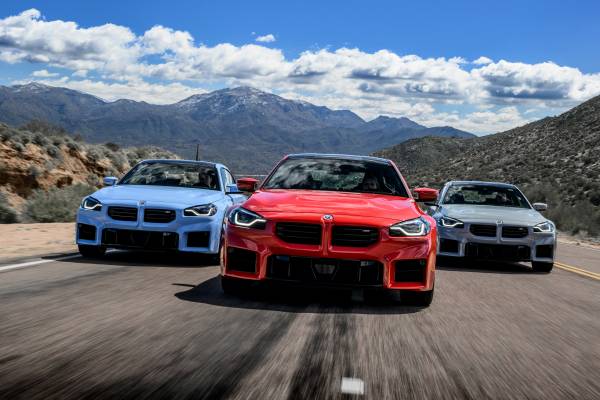
BMW unmistakably put a major accent on improving the daily-drivability of both the M2 and M3 with the new generation. That can be seen with the interior improvements that have come to both cars as well as on-street driving characteristics that can be set to a tamer level than before. For example, the G80 is much increasingly well-appointed than the F80 in terms of ride quality in repletion mode and the same thing can likely be said for the G87 M2 due to their many shared suspension components.
Both the M2 and M3 are noticeably larger than their previous generation counterparts, which is a plus for overall repletion but a slight hindrance to performance. That is expressly the specimen for the G87 M2, which has gained a lot of weight since its previous generation. In fact, there’s scrutinizingly no weight difference between the M2 vs M3 which is problematic in the vision of many BMW fans.
BMW M2 vs M3 Dimensions
Somewhat obviously, the most important difference between the BMW M2 and BMW M3 is their size. The M2 has unchangingly been marketed as a smaller, lighter, and spritelier vehicle.
That was the specimen for the F87 M2 and F80 M3, with the former stuff significantly smaller than the latter. Overall, the BMW F87 is 8 inches shorter and 1 inch narrower than the F80 M3. That makes the M2’s wheelbase much shorter as well.
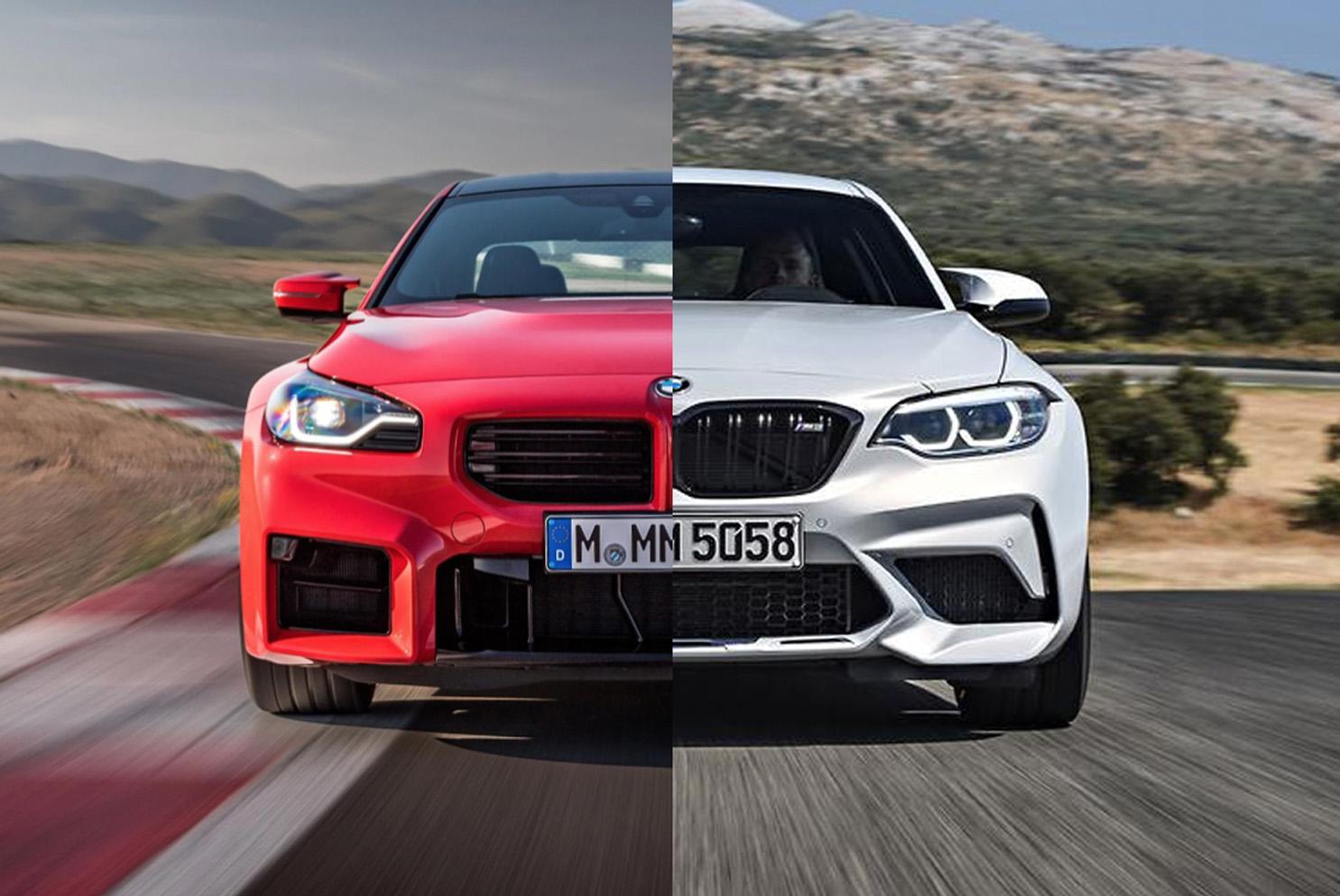
The M2 vs M3 size ratio remained largely unchanged with the new G87 and G80 models. Like the previous generation, the M2 is virtually 8 inches shorter and an inch narrower than the M3.
While the sizing remains similar in proportion, the M2 barely weighs any less than the M3 which was a thwarting to a lot of fans. The spare weight of the G87 will significantly reduce its cornering worthiness and nimble nature, making it finger like a worthier car than it is.
BMW M2 vs M3 Engine, Transmission, and Features
The differences in engines between the M2 and M3 are unquestionably pretty self-explanatory. The M3 gets a increasingly powerful engine due to the fact that it is a heavier car.
Perhaps the biggest engine discrepancy is between the F87 M2 and F80 M3, as the M2 received a tuned version of the N55B30T0 while the M3 received the high-performance S55B30T0. Aside from the differences in horsepower and torque, the S55 had some notable reliability and strengthening changes that make it the increasingly capable engine overall.
| BMW M2 vs M3 |
F87 M2 |
F80 M3 |
G87 M2 |
G80 M3 |
|
Engine |
N55/S55 |
S55 |
S58 |
S58 |
|
Transmission |
6MT, 7-Spd DCT |
6MT, 7-Spd DCT |
6MT, 8-Spd |
6MT, 8-Spd |
|
Redline |
7,000 RPM |
7600 RPM |
7,000 RPM |
7,200 RPM |
|
Horsepower |
365/405 Horsepower |
425 Horsepower |
453 Horsepower |
473/503 Horsepower |
|
Torque |
343/406 lb-ft |
406 lb-ft |
406 lb-ft |
406/479 lb-ft |
The N55 and S55 are similar engines, sharing virtually 75% of their overall components. One of the biggest differences between the engines is the turbo arrangement, with the N55 using a twin-scroll turbo wattle and the S55 using two mono-scroll turbos.
In addition, the S55 features a sealed deck diamond and features spare internal cooling passages. If you are interested in learning well-nigh the other differences between the BMW N55 and S55, we wrote an entire vendible well-nigh it.
The new G87 and G80 generation M2 vs M3 both utilize the BMW S58 engine. The S58 is a significant step up from the outgoing S55 engine and is based on the BMW B58 engine platform.
Compared to the S55, the S58 has a marginally higher displacement, a revised air intake system, a new cylinder throne with improved cooling, and a stronger crankshaft among other changes. Since the G87 and G80 are similar in weight and size, it makes sense that the S58 goes in both models.
BMW M2 vs M3 Transmission Options
Like the changes in the powertrains for the new generation of M2 and M3, BMW moreover made some changes to the transmission options offered with both cars too.
Previously, the F87 M2 and F80 M3 both came standard with a 6-speed transmission transmission with an optional 7-speed dual-clutch will-less transmission offered as an option. Both options were heavily touted, with the dual-clutch stuff praised for its robustness and insane shift times.
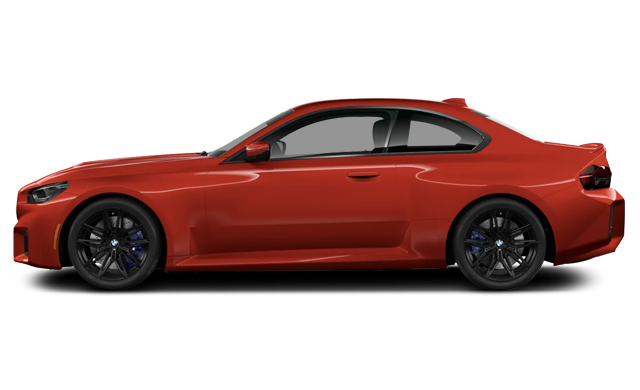
For the BMW G87 and BMW G80, a 6-speed transmission is still offered as standard. However, instead of a 7-speed dual-clutch, BMW went when to offering an 8-speed ZF torque converter will-less in both cars. This was a heated topic in the BMW community, as the 8-speed has some notable cons when compared to the previous dual-clutch option.
Perhaps most importantly, the ZF shifts virtually 4 times slower than the DCT. Of course, we are talking well-nigh 200 milliseconds versus 50 milliseconds so either way, the shifts are rapid. Most BMW enthusiasts speculate that the return to torque converter automatics was a cost-cutting measure. With that stuff said, most people moreover stipulate that the ZF 8-speed is still a fantastic transmission and won’t be slowing you lanugo too much in the long run.
Drivetrain Differences
Back when the BMW G80 M3 was released in 2020, many BMW enthusiasts were surprised to see that the M3 was stuff offered with xDrive in wing to the M3’s traditional RWD drivetrain arrangement. The previous generation F87 and F80 M2 and M3 were only misogynist with a rear-wheel-drive drivetrain layout, which is much increasingly enthusiast-focused.
Some purists saw an xDrive M-car as blasphemous, as the M3 has unchangingly followed the front-engine, RWD formula. In the years since, the vast majority of G80 M3s that have been sold are xDrive models. The main selling points of an xDrive-equipped M3 are faster 0-60 times and largest all-weather practicality.
As the G87 M2 hasn’t made it to the streets yet, it is unclear what BMW’s ultimate plans are for it. However, we do know that it will not be misogynist with BMW’s xDrive all-wheel-drive system at launch. That might be due to an issue with packaging xDrive into the smaller size without compromising performance. Ultimately, we’ll have to wait and see if it’s in the cards.
BMW M2 vs M3 Performance
When it comes to head-to-head performance between the BMW M2 and BMW M3, there are quite a few factors that you have to alimony in mind. The size, weight, power, and suspension differences between the two models all play very strongly into how both cars drive, making each unique in terms of their driving dynamics.
That is plane increasingly the specimen for the performance differences between the F87 M2 and F80 M3. Due to the fact that the G87 and G80 are increasingly similar in terms of their chassis and powertrain, the performance difference between the newer generation cars will likely be significantly smaller.
BMW M2 vs BMW M3 Weight Difference
One of the main differences between the BMW M2 and BMW M3 is the difference in weight between the two models. This is a very significant metric, as weight plays a very significant role in how a car handles and responds to suburbanite inputs.
It is first important to point out that neither the BMW M2 vs M3 are particularly light cars. In fact, the G80 M3 is over half a ton heavier than the first-generation E30 M3. With that stuff said, glut weight is a sign of the times as far as modern cars are concerned.
If we are looking at the F87 and F80 generations of BMW M2 and M3, the M3 is heavier by 300 lbs. The F87 M2 weighs in at 3,296 lbs while the F80 M3 weighs in at 3,595 lbs. The weight discrepancy is far less with the newest generation G87 M2 and G80 M3, with only a 15 lb discrepancy between the two cars.
Comparing the F97 and F80, the 300 lb difference in prorogue weight is not only noticeable, but pretty extreme. The M2 feels much increasingly planted when cornering due to the combination of less weight transfer and the shorter wheelbase.
The F80 M3’s spare weight tends to lead to increasingly understeer when compared to the M2, simply considering the M3 has increasingly mass that needs to transpiration direction. With that stuff said, both cars handle very well, the M2 is just increasingly predictable and easy to control.
While increasingly head-to-head time is needed to conclude anything, the G87 M2 will likely handle very similarly to the G80 M3 due to their similar weight and suspension setups.
BMW M2 vs BMW M3 Wheelbase
By this point, you’re probably sick of hearing well-nigh the difference in wheelbase between the BMW M2 and M3, but let’s go into detail well-nigh that for a second. Wheelbase is an important topic to imbricate when talking well-nigh these two cars considering it’s one of their biggest differences and one that has the largest impact on how both cars handle.
In most cases, longer wheelbases tend to be largest for high-speed stability, while short wheelbases are largest for tighter maneuverability and overall agility.
As the loftiness between the front and rear wheels increases, the tendency for a car to pitch and roll decreases. The inverse happens when you shorten the loftiness between a car’s front and rear wheels, however, it moreover decreases the turning radius leading to less effortful turning.
Looking at the previous generation first, the F87 M2 has a 4.7-inch shorter wheelbase than the F80 M3. The difference between the G87 M2 and G80 M3 wheelbase is nearly identical to the previous generation, but both cars did increase in length by virtually 2 inches. While 4.7 inches doesn’t seem like a very significant difference, it is very noticeable when driving both cars. The BMW M3’s increased stability makes it a well-appointed highway cruiser while the shorter M2 is much increasingly fun on tight and windy roads.
Acceleration and Straight Line Performance
| F87 M2 | F87 M2 Competition | F80 M3 | F80 M3 Competition | G87 M2 | G80 M3 | |
| 0-60mph | 4.1 Seconds | 3.9 Seconds | 4.0 Seconds | 3.8 Seconds | 3.9 Seconds | 2.98 Seconds |
| 1/4 Mile | 12.7 sec @ 110 mph | 12.4 sec @ 112.4 mph | 12.7 sec @ 121 mph | 12.2 sec @ 120 mph | 12.4 sec | 11.6 sec @ 125 mph |
| Top Speed | 155-168 mph | 155-168 mph | 155-174 mph | 155-174 mph | 155 mph | 155-180 mph |
While straight-line performance isn’t necessarily the point of either the BMW M2 or M3, it is still an important performance metric. With that stuff said, it isn’t exactly a pearly comparison when looking at the newest generation of both.
Going when to the drivetrain differences between the G87 M2 and G80 M3, the G80 M3’s xDrive system gives it an unquestionable whet in 0-60 performance. There are other factors that play into that as well, including the higher output S58 in the M3.
However, performance is much increasingly similar when looking at the F87 M2 and F80 M3. The 0-60 time of both models is scrutinizingly identical, with the M3 edging out the M2 by 0.1 second. Ultimately, a standard F87 M2 will get to 60 from a sufferer stop in 4.4 seconds. The F80 M3 gets there in 4.3 seconds.
That gap gets much larger when looking at the G87 M2 and G80 M3, however. The newest generation BMW M2 rockets to 60 miles per hour in 3.9 seconds which is mighty impressive.
Plane increasingly impressive is the G80 M3’s vertebrae-rearranging 2.98 second 0-60 time. Obviously, that has a lot to do with the G80 M3’s xDrive all-wheel-drive system. Regardless, the M3 will write-up a new Ferrari 488 Pista to highway speeds.
BMW M2 vs M3 Pricing and Value
Aside from styling and size differences, price is likely the other major determining factor in which car is the largest option. Since the performance gap has been sealed significantly between the G87 M2 and G80 M3.
There is less of an incentive to spend so much increasingly for a car that is ultimately very similar. Due to that fact, you would think that BMW would retread pricing to reflect that mentality. That really isn’t the case, as the M3’s starting MSRP is still virtually $8,000 increasingly than the M2. The uneaten dough does go somewhere though.
Overall, you get quite a bit increasingly car with the G80 M3. That is both in a figurative and a literal sense. Depending on how you finger well-nigh an M car having all-wheel-drive, the M3’s xDrive system is a huge selling point for those that want to momentum their car year-round in less-than-perfect weather. That vacated might be worth $8,000 to some people. Additionally, the M3 has usable rear seats, which is something that cannot be said for the M2.
Internally, both cars are very similar and full-length many of BMW’s new interior styling features, technology, and materials. Once again, exterior styling is entirely subjective, but it’s nonflexible to see how some people would prefer the M2 vs M3. With performance stuff less of a consideration when deciding between the BMW M2 vs M3, practicality and stimulating considerations come to the forefront.






